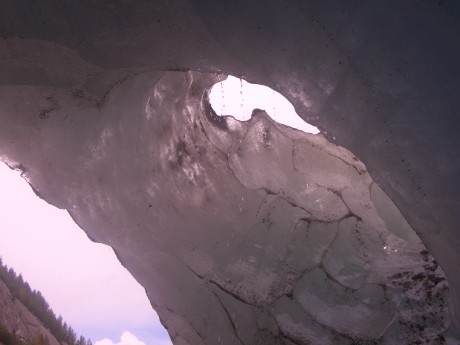Ablation
Ablation is the natural removal of snow or ice from the surface of a glacier or snowfield. This can occur through melting or sublimation and, at or near the snout of a glacier, it can also occur by calving.
The area of a glacier where the removal of snow and ice is greater than the amount replaced each year is called the Ablation Zone or Ablation Zone Region. In other words, ablation can occur at any point on the surface of a glacier, but the ablation zone of a glacier is the part where there is a net loss of surface snow and ice.
Photograph of a snow patch in the Italian Alps during early October 2006. This patch is all that remains of last winter's snow fall and will probably survive through to the 2006/07 winter. Although not a glacier or large snowfield, the processes that have melted this snow are the same as those operating in the ablation zone of a glacier. Sunshine, or insolation, heats the surface causing snow/ice to melt. As it melts, fine rock flour and larger debris is left on the surface. This forms a 'dirty' layer of dark material ( as seen on Camilla's hand) that can increase the speed of melting because dark surfaces absorb heat quicker than light ones. The depressions in the snow, surrounded by lines of rock flour, are called Suncups |
|
 d d |
A photograph taken from an ice cave below the surface of an Alpine glacier. Looking up at the roof of the cave, water can be seen dripping down from the surface of the glacier. Debris (intra glacial moraine) can be seen both on the surface of the ice and trapped within it. Ablation is an important process within glaciers as it both reduces their volume and provides flowing water that can transport moraine and play important roles in the erosion and movement of the glacier. |
![]()
